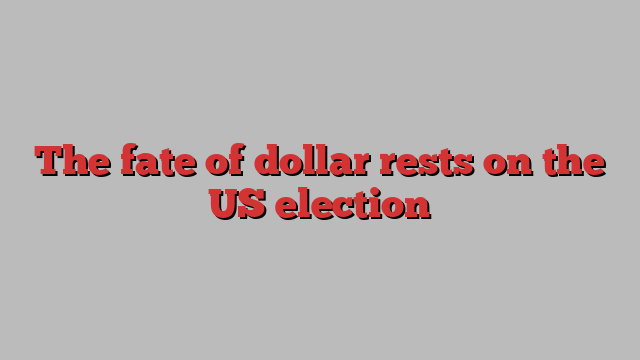
Unlock the US Election Countdown newsletter for free
The stories that matter on money and politics in the race for the White House
The writer is professor of economics and political science at the University of California, Berkeley
The fate of the dollar — like much else — turns on the outcome of this November’s US presidential vote. On this everyone agrees. They just don’t agree on the direction of the turn.
The implications of a victory for Democrats are relatively uncontroversial. The dollar has been strong in recent years because President Joe Biden has championed a strong dose of fiscal stimulus while freeing the Federal Reserve to raise interest rates in response to inflation. This mix of loose fiscal and tight monetary policies has made for a strong currency, as the textbooks predict.
But with the budget deficit already wide and public debt having risen to levels that many Americans find alarming, a re-elected Biden — or a victory for a replacement among the Democrats if he stands down after last week’s debate — would have less fiscal room for manoeuvre. Meanwhile, the Fed would be able to bring down its policy rates as inflation recedes further, as it presumably will. Thus, the policy mix would be less dollar-positive in a second Biden term. This by no means augurs a dollar crisis, but it is a recipe for a somewhat weaker greenback.
Finally, the Biden administration has been careful to co-operate with allies when imposing financial sanctions on Russia. Hence its weaponisation of the dollar has not led to widespread reserve diversification that might weaken the currency. Co-operation means that other countries potentially targeted by sanctions have had nowhere to go.
The currency consequences of a second presidential term for Donald Trump are more difficult to forecast. It is tempting to extrapolate from the past, as a team of Citi analysts did earlier this year. The dollar rallied by some 5 per cent following Trump’s surprise 2016 victory, they observe. It declined by a similar amount around the time of his 2020 electoral defeat. On these grounds, it is tempting to think that a Trump victory in 2024 would again result in a stronger dollar.
Indeed, Trump well may be planning more tax cuts for business and the wealthy. He is less likely to be critical of debt and deficits when he is their author. And we have seen how expansionary fiscal policy can be dollar-positive.
Similarly, new tariffs on imports, despite their costs, are also likely to be dollar-supportive. Tariffs render imports more expensive. They induce consumers to shift their spending towards domestic goods, pushing up their prices as well. The Fed is apt to respond to the resulting inflation by again raising rates, which would strengthen the dollar. A stronger dollar exchange rate would push import prices back down, at least in part, helping the central bank to achieve its disinflationary goal.
But one can also envisage other scenarios. A self-avowed low-interest-rate man, Trump might pressure the Fed not to respond in this way. The result, sustained inflation, would be dollar-negative. Trump’s advisers have already mooted changing the Fed’s legal position, mandate or procedures to require it to consult with or even take marching orders from the president. In any case, come May 2026, Trump as president would have the straightforward option of nominating a more compliant Fed chair. He presumably would do so, having learnt from he describes as his “mistake” of choosing Jay Powell, who was sworn in in 2018.
Moreover, rumours are rife that influential Trump advisers are plotting for a weaker dollar. They saw how the currency’s strength offset the impact on the trade balance of the tariffs imposed in Trump’s first term. They appear committed to preventing the same from happening again.
They are likely to advocate additional sanctions against countries that do not prevent their currencies from falling against the dollar. They can point to the 1985 Plaza Accord as an example of how foreign governments can be pressured by the US into adopting exchange-rate-strengthening policies. Another idea is a tax on foreign purchases of US assets to prevent such foreign investment from supporting the greenback at high levels.
Whether these dubious measures would in fact achieve their goal of strengthening the competitive position of US manufacturing is questionable. A tax on foreign capital that discourages investment in the US would not make for a more competitive American economy. Threatening countries with more tariffs if their currencies don’t decline may only have the undesired effect of strengthening the dollar further. But, dubious or not, these measures can’t be ruled out.